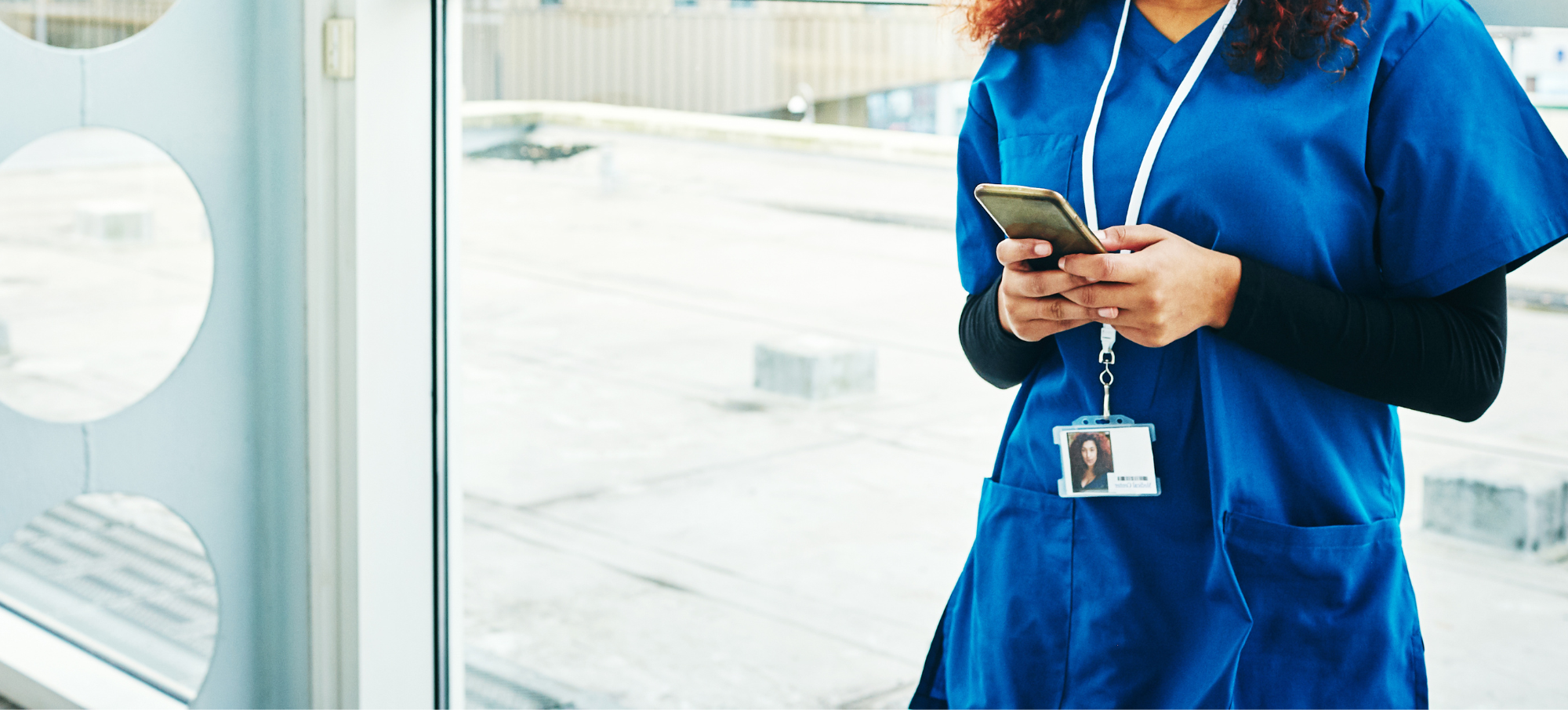‘What Consultant Connect allows us to do so well is provide support from a distance. We don’t want to take clinicians’ autonomy away, but we want to promote their confidence in wound care whilst maintaining a supportive presence using Consultant Connect.’
Available via Consultant Connect since February 2024, the Tissue Viability Photo Messaging service enables clinicians within South Warwickshire University NHS Foundation Trust (SWFT) to securely send high-quality patient images to the Tissue Viability Team. Designed to sit alongside completed referrals, clinicians use the service for management advice regarding ward patients. We spoke with Nicola Crabbe, Tissue Viability and Leg Ulcer Nurse, to find out why the pathway was initiated.
What was the process for SWFT colleagues to seek wound management advice before implementing Consultant Connect?
‘Previously, we received a lot of referrals with limited information and no photos because clinicians were so busy. Staff would need to verbally describe a wound within a referral when a photo would have easily provided more context. All referrals would then need to be verified by a member of the Tissue Viability Team, which involved visiting the patient’s ward to assess their wound. Many of the wounds weren’t relevant to us and could be effectively managed on the ward, so we decided to use funding to purchase electronic tablets for clinicians to take photos to attach to referrals. Unfortunately, for various reasons, this approach was not successful.
‘I then heard about Consultant Connect from a diabetes consultant who had asked me to forward a patient photo to him using the app. We set up the Tissue Viability Photo Messaging service earlier this year, and it’s been a game changer for us. SWFT clinicians still submit referrals in the same way, but they now also forward images of their patient’s wound via the Consultant Connect App, and we can review those and advise whether we need to be involved in the patient’s care.’
What are the benefits of the new pathway?
‘For SWFT colleagues, it’s very accessible because they use their own phones, and it’s completely secure; the images don’t save to their camera roll. Communication is quicker and more open, saving everyone time. It makes life easier for clinicians, and it’s all for the patients’ benefit at the end of the day.
‘The Consultant Connect system sends us an email notification when a new case is received so we can be more responsive. We’ve had colleagues call us whilst they take photos so we can give immediate advice, and we’ve found that different cohorts of clinicians are utilising the service too; physiotherapists and occupational therapists are seeking advice regarding patients with pressure damage wounds, and, although we might not have seen the patient or been involved in their care, they still want guidance. It’s great that this service has progressed into a multidisciplinary collaboration.
‘For the Tissue Viability Team, our service operates on weekdays only, and a referral sent late on a Friday likely wouldn’t be seen until Monday. Wounds can change, and by that time, there could be significant deterioration or improvement depending on the course of action taken in the interim. Consultant Connect gives us real-time photos that often tell a story that can’t be verbalised.’
All Consultant Connect activity is securely saved in the cloud and not on devices and can be accessed at any time on a computer. How does this benefit your team?
‘We download most photos shared with our team to save them to our referral system. It’s beneficial if I’m picking up a colleague’s query whilst they’re on annual leave. Reviewing a patient’s past photos is helpful to gain insight into their history. The system is straightforward to navigate, completely changing how we triage and see patients. If we manage the care of all the patients for whom we received referrals, we’re taking away the opportunity for clinicians to learn. Hopefully, by using this service, we’re empowering them to make decisions, and they don’t need to rely on us as much. I’ve seen occurrences where staff have built on their knowledge from previous cases and feel confident in treating future patients with a similar presentation without our input.’
Patient example
‘The implementation of Consultant Connect has allowed us to support the staff at the rehab hospital remotely, cutting down on time-consuming travel. The staff need the support and guidance, but the photography element has meant we can feed back and encourage them to persevere when they’re on the correct path.
‘We had a patient with a complex wound admitted a few months ago to our rehab hospital, which is on another site, after the traumatic wounds she had sustained were slow to heal. Staff used the Consultant Connect App to send the Tissue Viability Team frequent updates so that we could provide dressing advice and monitor her progress. She has now recovered and been discharged, which is a huge achievement. The staff who managed her care did extraordinarily well, but the additional support of the photos via Consultant Connect was a contributing factor and positively impacted the patient’s healing.
‘Without this service, a team member would’ve had to commute to the rehab hospital every few weeks. The staff could’ve sent photos via email, but often, barriers, such as suitable devices and their availability, and staff confidence in using software, get in the way of making that possible. What Consultant Connect allows us to do so well is provide support from a distance. We don’t want to take clinicians’ autonomy away, but we want to promote their confidence in wound care whilst maintaining a supportive presence using Consultant Connect. It’s very easy to take over, but this helped our clinicians develop their clinical skills and take a more active role in the patient’s wound care.’
If you would like to discuss setting up an A&G service in your area, please email hello@consultantconnect.org.uk or call 01865 261467.
Related materials:





